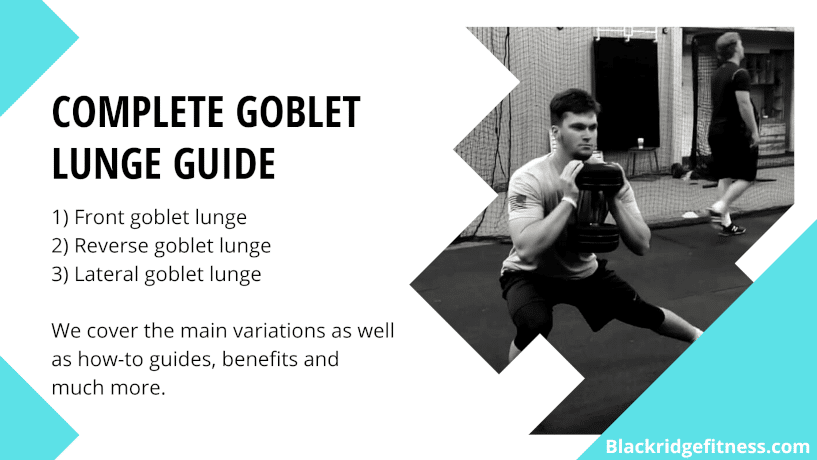Related guides: bench squat, burpee broad jump, kneeling squat, reverse lunges, v squat, b stance hip thrust
Table of contents: skip to what you’re interested in
Front Goblet Lunge
Lateral (side) Goblet Lunge
Reverse Goblet Lunge
Front Goblet lunge
A goblet lunge is simply a normal lunge whilst using a goblet grip with a weight, such as a dumbbell or kettlebell.
A goblet grip is where your elbows are tucked into your ribs and your palms are placed on either side of your sternum, facing toward your chin.
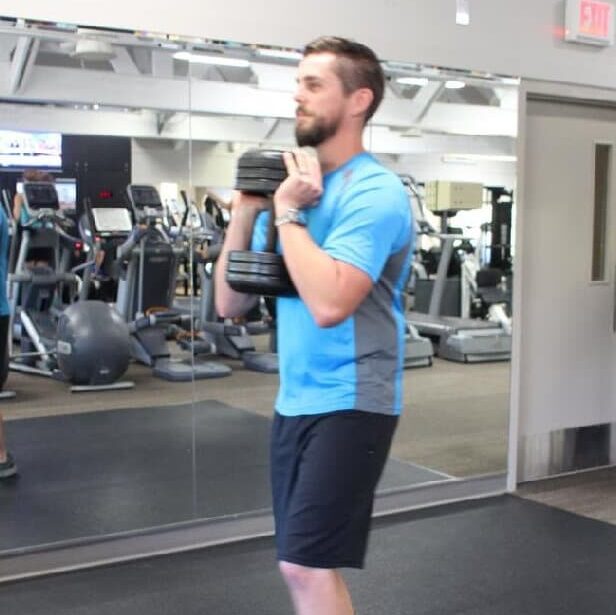

How-to video instructions
Form tips
- Keep the weight close to your chest throughout the movement.
- Don’t let your leading knee move much tighter than a 90-degree angle. We don’t want to see our knee move over our toes (mid-foot at most).
- We want our knees to be following the angle given by the 2nd and 3rd toes.
- Keep as balanced as possible in your foot and push through your heel on the way up.
- Keep your torso upright throughout the movement.
Related guides: bench squat, burpee broad jump, kneeling squat, reverse lunges, v squat, b stance hip thrust
Goblet lunge benefits
Brilliant for glute and quad activation
Whatever grip you’re using, the lunge is a superb exercise for targeting the glutes and quads. The isolation component of using one leg can be helpful for focusing on proper technique and muscle activation. Whilst you’re able to move more weight with a squat, you may find that the quality of reps from a lunge is better.
The goblet grip encourages the correct form
It’s important to keep your chest up and your spine upright and straight throughout a lunge. However, many people tend to lean forward. This decreases stability as our weight is further forward on our front foot. Furthermore, this leant forward stance makes it harder to activate the glutes. These two factors make leaning forward sub-optimal and potentially injury-inducing. You can test both being upright (weight through our heel) and leaning forward (weight through our mid-foot/toes) without weight to feel a difference in glute activation.
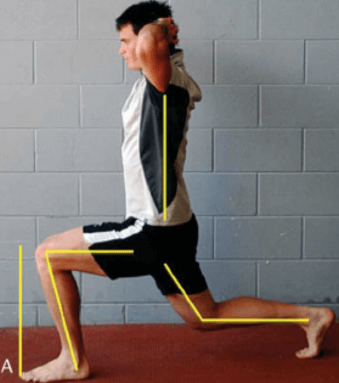
Lunges promote core stability and therefore real work functionality
Because single leg lunges are more unstable than double-legged exercises, like squats, our core has to do more work to stabilise the hips and torso. You may have experienced tipping side to side when performing lunges. It’s these micro-adjustments that make the lunge an athletic and functional movement. You want to be able to apply your fitness to the real world.

Front goblet squat variations
Dumbbell goblet lunge
Kettlebell goblet lunge
Goblet walking lunge
Goblet static lunge
For this variation, we’re just making sure that instead of stepping forward when we reach the bottom of the lunch, we step back to our original position.

Goblet lunge muscles worked
Quadriceps
The quads will be doing the majority of the work for this exercise. Focused on extending the knee joint, once our knee is at a 90-degree angle at the bottom of the lunge, the quad will be working to push our body upwards as we press through the heel.
The quads will also be stabilising the knee joint on the way down to the bottom of the lunge.
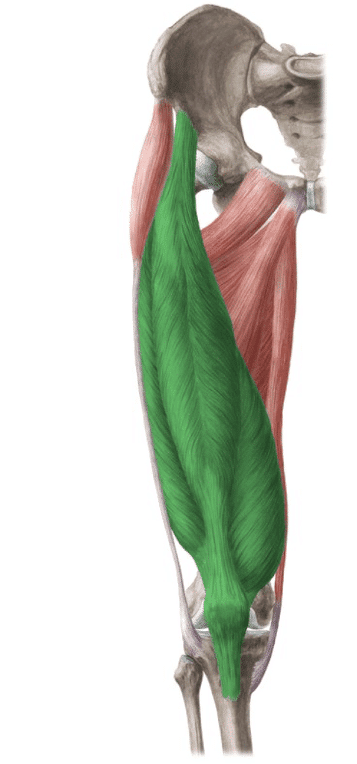
Glute Maximus
The glute maximus is responsible for pushing the hips forward in this movement. You’ll be able to feel this activation at the top of the lift as you reduce the angle that your hip is hinging to nothing (straight line through torso and femur).
Your core, hamstrings, calves, back and other stabilisation muscles will also be activated to a less degree to complete this exercise.
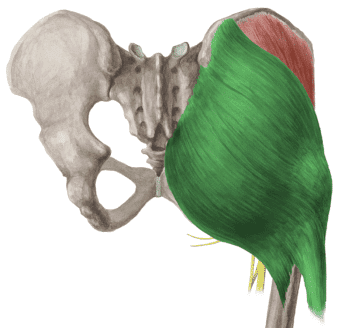
Goblet reverse lunge
You guessed it! With this exercise, we’re simply stepping back instead of stepping forward.
Form tips
- Start with feet shoulder-width apart, holding a weight with the goblet grip (weight touching your chest, elbows tucked in, palms facing up.
- Take a step backwards and lower your back knee down until it’s almost touching the floor.
- Ensure that your front knee is at roughly a 90-degree angle and your torso is upright.
- When you’re at the bottom of the lunge, push through your front heel, and slightly with your back foot to return back to your original position.
Goblet reverse lunge benefits
This variation has all of the benefits of the standard, front variation that you can skip to here. However, there is one key difference:
Reverse lunges are better at training hamstrings and glutes
Whilst the front lunge works more on the quads, the reverse lunge is a great way to target your glutes and hamstrings.
Test forward and reverse lunges to feel the difference in activation. If you’re looking to do more work on your posterior, add this variation to your program.
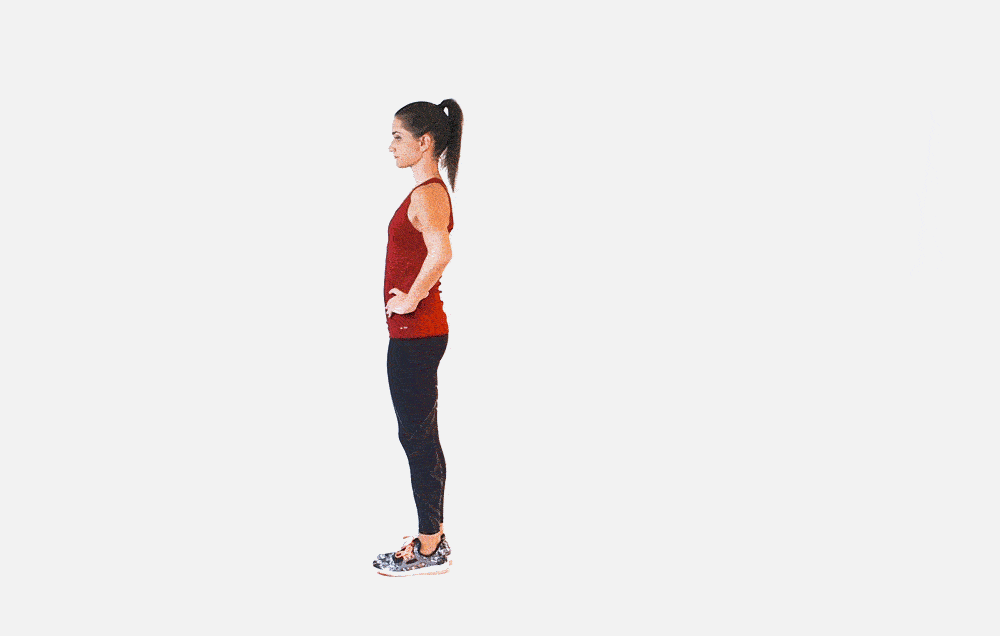
Variations
Here are some variations of the goblet reverse lunge for you to try out:
- Goblet alternating reverse lunge – with this variation, once you have completed a rep with one leg and returned to the starting position, complete the next rep with your other leg
- Kettlebell goblet reverse lunge
- Dumbbell goblet reverse lunge
Goblet reverse lunge muscles worked

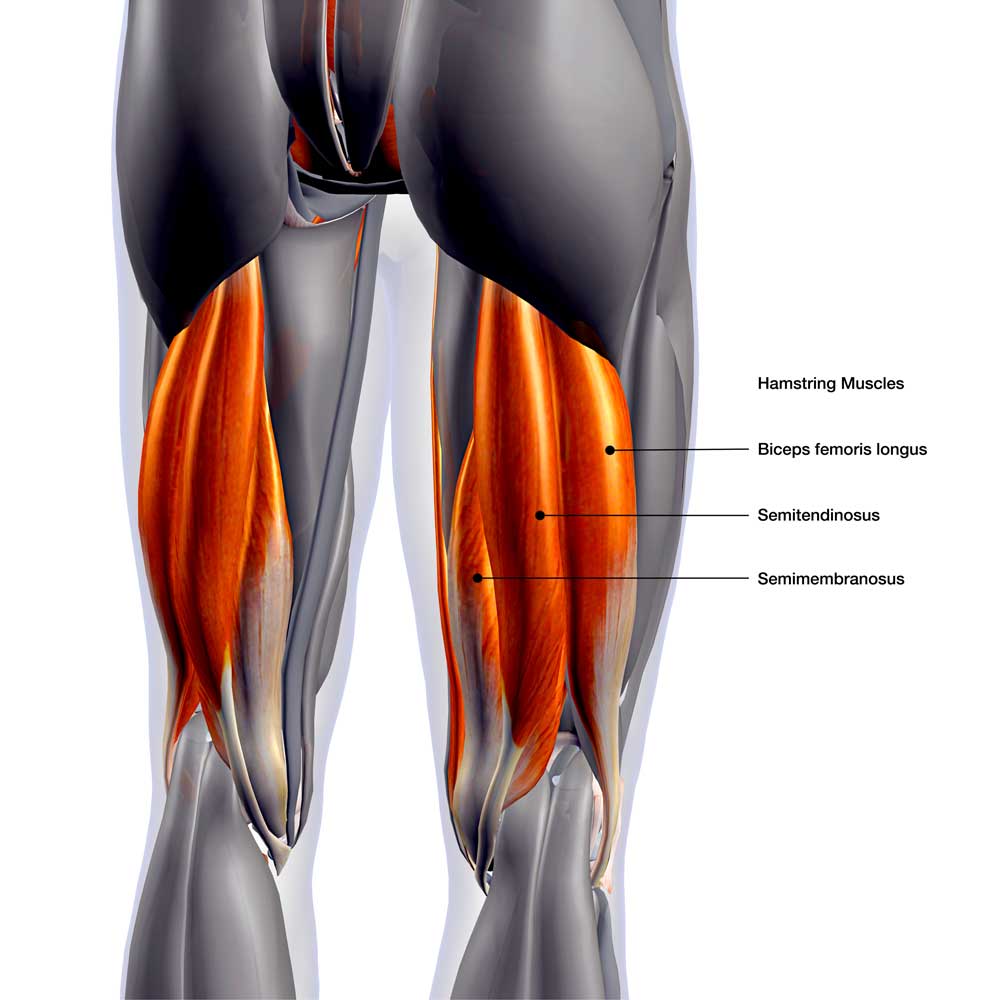

Goblet lateral lunge – also known as the goblet side lunge or goblet adductor lunge
This variation differs the most from the standard variation as we’re stepping into a new plane of motion. With the forward and reverse variations, we’re moving in the same plane, travelling on the same line but starting in different directions.
With the goblet lateral/side lunge, we’re going to be working the legs in a slightly different way.
How to perform the goblet lateral lunge
Form tips
- Start with feet shoulder-width apart, holding a weight with a goblet grip
- Take a big step out to the side, roughly 2 shoulder width’s distance
- Load the weight onto the heel of the foot that just moved, keep your other leg straight
- Keep your chest up and your shoulders back as you lower down
- Once at the bottom of the lunge, push through your heel to return back to your starting position
Benefits of the goblet lateral lunge
This variation promotes hip stability and strength
Because we’re opening the hips up for this movement, we’re working the legs in a very different way to the front and reverse variations.
We’ll be targeting some different muscle fibres in the quads whilst stretching and strengthening the hips.
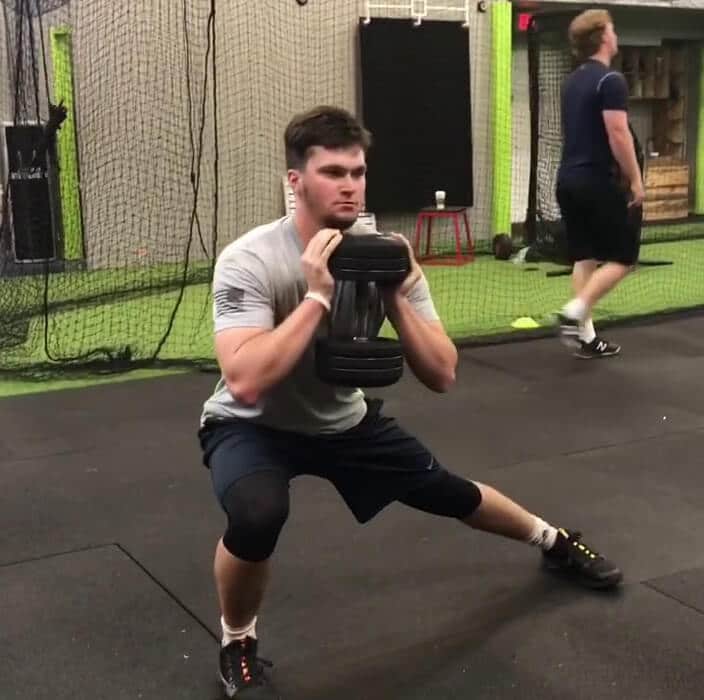
Goblet lateral lunge muscles worked
Whilst the movement looks quite different from the standard front lunge, we’re still using the same muscles (view them here) whilst gaining some extra hip benefits.
Goblet lunge alternatives
Barbell Squat
This exercise will do a great job of targeting the quad, glutes and core, much like the lunge can. This exercise should be a staple in your routine. However, big barbell lifts can be dangerous so please use the video below to ensure you’re using the correct form.
Weighted step-ups
This movement mimics the lunge in the way that we’re only working with one foot. You may find dumbbells by your side easier to manage vs the goblet grip. See the video below to ensure you perform this exercise safely.
Additional resources
- Lunge performance and its determinants
- Gluteus Maximus Activation during Common Strength and Hypertrophy Exercises: A Systematic Review
- Related guides: bench squat, burpee broad jump, kneeling squat, reverse lunges, v squat, b stance hip thrust

Olly is a CIMSPA accredited personal trainer with a BSc degree in sport management from Solent University. He has over 10 years experience helping clients reach their health & fitness goals.

